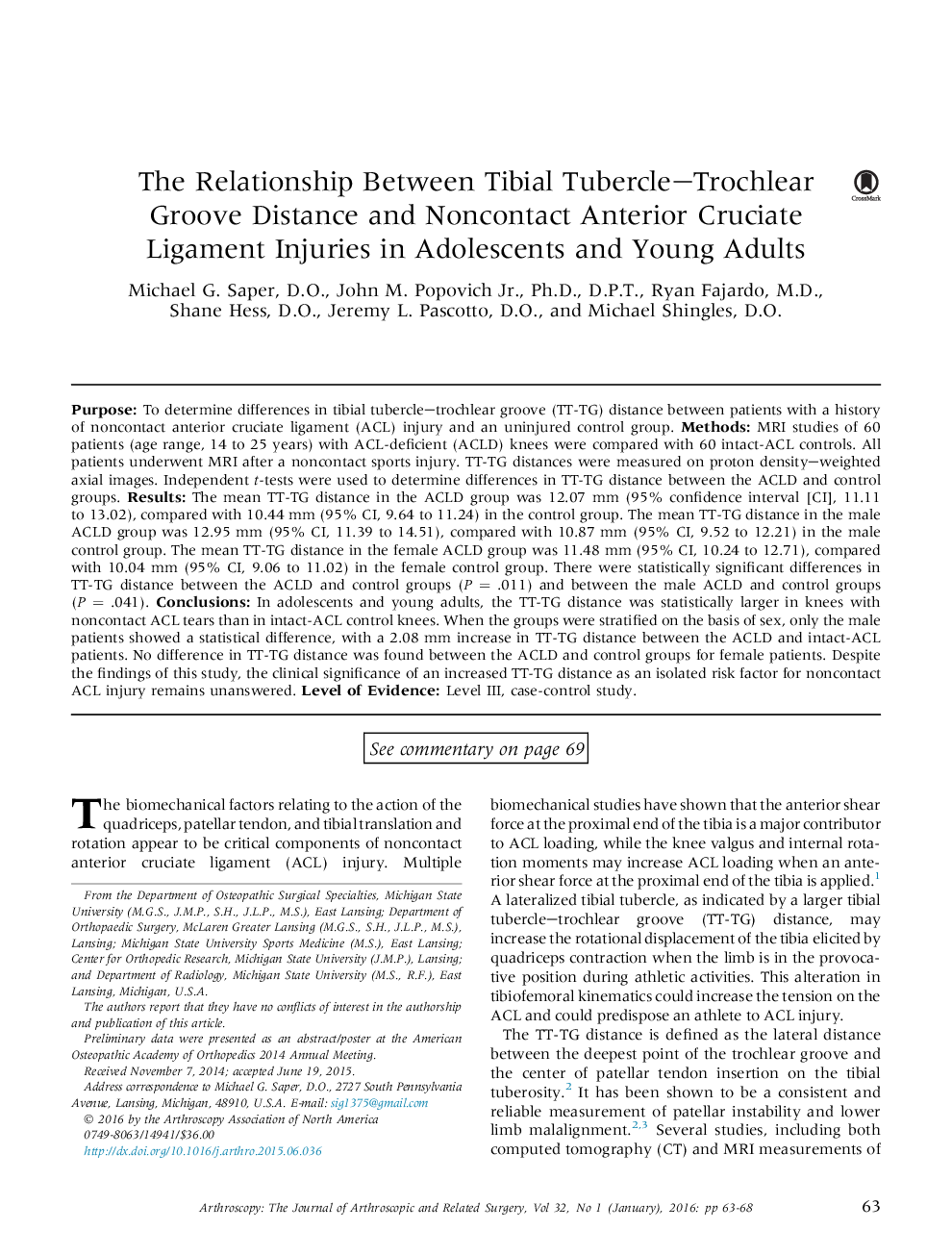| Article ID | Journal | Published Year | Pages | File Type |
|---|---|---|---|---|
| 4042259 | Arthroscopy: The Journal of Arthroscopic & Related Surgery | 2016 | 6 Pages |
PurposeTo determine differences in tibial tubercle–trochlear groove (TT-TG) distance between patients with a history of noncontact anterior cruciate ligament (ACL) injury and an uninjured control group.MethodsMRI studies of 60 patients (age range, 14 to 25 years) with ACL-deficient (ACLD) knees were compared with 60 intact-ACL controls. All patients underwent MRI after a noncontact sports injury. TT-TG distances were measured on proton density–weighted axial images. Independent t-tests were used to determine differences in TT-TG distance between the ACLD and control groups.ResultsThe mean TT-TG distance in the ACLD group was 12.07 mm (95% confidence interval [CI], 11.11 to 13.02), compared with 10.44 mm (95% CI, 9.64 to 11.24) in the control group. The mean TT-TG distance in the male ACLD group was 12.95 mm (95% CI, 11.39 to 14.51), compared with 10.87 mm (95% CI, 9.52 to 12.21) in the male control group. The mean TT-TG distance in the female ACLD group was 11.48 mm (95% CI, 10.24 to 12.71), compared with 10.04 mm (95% CI, 9.06 to 11.02) in the female control group. There were statistically significant differences in TT-TG distance between the ACLD and control groups (P = .011) and between the male ACLD and control groups (P = .041).ConclusionsIn adolescents and young adults, the TT-TG distance was statistically larger in knees with noncontact ACL tears than in intact-ACL control knees. When the groups were stratified on the basis of sex, only the male patients showed a statistical difference, with a 2.08 mm increase in TT-TG distance between the ACLD and intact-ACL patients. No difference in TT-TG distance was found between the ACLD and control groups for female patients. Despite the findings of this study, the clinical significance of an increased TT-TG distance as an isolated risk factor for noncontact ACL injury remains unanswered.Level of EvidenceLevel III, case-control study.
